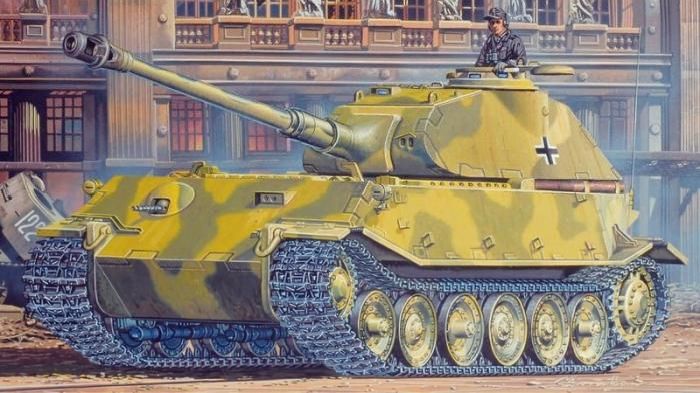|
|
Tank Drawing
|
It arose in British factories making the hulls of the first battle tanks: workmen and possible spies were to be given the impression they were constructing mobile water tanks for the British Army, thus keeping the production of a fighting vehicle secret.
The term was first used in a secret report on the new motorised weapon presented to Winston Churchill, then First Lord of the Admiralty, by British Army Lt.-Col. Ernest Swinton.
Winston Churchill's biography states, "To disguise the device, drawings were marked "water carriers for Russia." When it was pointed out this might be shortened to "WCs for Russia," the drawings were relabeled "water tanks for Russia." Eventually the weapon was just called a tank. (In fact, the prototype was referred to as a water-carrier for Mesopotamia. The Russian connection is that some of the first production Tanks were labelled in Russian "With Care to Petrograd," as a further security measure.)
In his autobiography, Albert Stern (founder member of the Landships Committee, later head of the Mechanical Warfare Supply Department) says that on or shortly after October 20, 1915, "Mr. Macnamara then suggested, for secrecy's sake, to change the title of the Landships Committee. Mr. d'Eyncourt agreed that it was very desirable to retain secrecy by all means, and proposed to refer to the vessel as a "Water Carrier." In Government offices, committees and departments are always known by their initials. For this reason I, as Secretary, considered the proposed title totally unsuitable (The initials W.C. are a British abbreviation for a water closet; in other words, a toilet. Unfortunately, later in the War a number of Mk IV Tanks were fitted with grapnels to remove barbed wire. They were designated "Wire Cutters" and had the large letters "W.C." painted on their rear armour). In our search for a synonymous term, we changed the word "Water Carrier" to "Tank," and became the "Tank Supply" or "T.S." Committee. That is how these weapons came to be called "Tanks," and the name has now been adopted by all countries in the world." Swinton states, "Since the 24th December, 1915, the Tank has always been known as such; and there has been no confusion as to its nomenclature." His Notes on the Employment of Tanks, in which he uses the word throughout, was published in January 1916.
|
|









